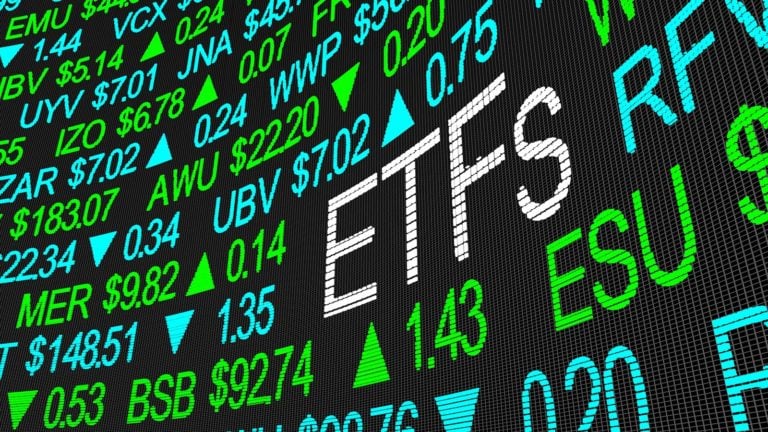Some of the best-performing stocks over the long haul are mid-caps, traditionally defined as companies with market capitalizations between $2 billion and $10 billion. In January 2020, I wrote about 10 mid-cap ETFs to buy for the next decade.
“While mid-cap stocks underperformed compared to large-caps in 2019, the S&P Mid Cap 400 outperformed both the S&P 500 and the S&P Small Cap 600 over the past 15 years,” I wrote in 2020.
“Many of the ETFs to buy for the next decade should be those that invest in mid-cap stocks because, in the long run, these are the stocks that will deliver a combination of capital appreciation and income.”
Financial blogger Ben Carlson published his annual periodic table of asset performances on Jan. 7. Leading the charge were large-cap stocks, up 26.2%, while mid-caps finished third, up 16.1%. However, mid-cap stocks have averaged an annual return of 9.0% over the past decade, second only to large caps at 11.9%.
The moral of the story?
Mid-cap stocks usually don’t outperform every other asset class in a given year. However, in the long run, they deliver consistent returns.
If you’re looking for a combination of capital appreciation and income, here are three mid-cap ETFs to buy to accomplish that.
Pacer US Cash Cows 100 ETF (COWZ)

Pacer US Cash Cows 100 ETF (BATS:COWZ) isn’t just one of my favorite mid-cap ETFs, it’s one of my favorite ETFs — period.
Why is that? I’m glad you asked.
The ETF invests in the top 100 companies based on free cash flow yield from the Russell 1000. If there’s one thing I look for in stocks, it’s free cash flow. COWZ targets quality businesses with strong cash flow, healthy balance sheets and trading at a discount to their intrinsic value.
The central thesis of the ETF is that companies with high free cash flow are more likely to grow their dividends over time. COWZ currently yields 1.91%. Since its inception in December 2016, it’s had one losing year out of seven — a total return of -10.04% in 2018 — which is one reason Morningstar gives it a five-star rating.
The ETF tracks the performance of the Pacer US Cash Cows 100 Index. As of Dec. 31, its free cash flow yield was 8.54% — defined as free cash flow divided by enterprise value — 508 basis points higher than the Russell 1000 Value Index.
I’ve always considered a free flow yield over 8% in value territory. COWZ relative to the value index confirms this assumption.
It’s an excellent way to get mid-cap exposure with better value.
Invesco S&P MidCap Quality ETF (XMHQ)

Invesco S&P MidCap Quality ETF (NYSEARCA:XMHQ) tracks the performance of the S&P MidCap 400 Quality Index, which is approximately 80 stocks selected from the S&P MidCap 400 Index.
The 80 stocks chosen for the index are rated by quality. Each of the 400 stocks in the parent index is rated by three fundamental measures: return on equity, accruals ratio and financial leverage ratio.
The accruals ratio is net income minus free cash flow divided by total assets. Investors want this ratio to be as low as possible. Those with high accrual ratios are generating a higher proportion of non-cash earnings, which are transitory. The financial leverage ratio determines how much of a company’s assets are funded by debt. Here, too, lower is often better.
The average of the three scores is multiplied by the market cap. The top 80 stocks make the cut. The fund rebalances and reconstitutes the components twice a year.
The top three sectors by weighting for XMHQ are industrials (30.42%), consumer discretionary (17.25%) and financials (13.91%).
XMHQ charges a reasonable 0.25% expense ratio.
First Trust SMID Cap Rising Dividend Achievers ETF (SDVY)

First Trust SMID Cap Rising Dividend Achievers ETF (NASDAQ:SDVY) tracks the performance of the Nasdaq US Small Mid Cap Rising Dividend Achievers Index. The index’s 100 small and mid-cap companies have a history of raising their dividends and should continue to do so in the future.
Some investors like to go yield-chasing. However, the more important factor for quality dividend stocks is consistently increasing the annual dividend. It’s not the yield that matters; the number of years increasing the dividend counts.
To make the cut, stocks must have:
- a minimum three-month average daily dollar trading volume of $2 million
- a minimum market cap of $500 million
- paid a dividend in the trailing 12-month period greater than the dividend paid in the trailing 12-month period three and five years prior
- generated positive earnings per share in the most recent fiscal year greater than the earnings per share three fiscal years prior
- a cash-to-debt ratio greater than 25%
- a trailing 12-month period payout ratio no greater than 65%
The stocks that qualify are then ranked by the dollar dividend increase over the previous five-year period, current dividend yield and payout ratio. The highest 100-ranked stocks make the index.
For SDVY, the top three sectors by weight are financials (29.69%), industrials (26.11%) and consumer discretionary (15.90%). Over the past five years, SDVY has been rated five stars for risk-adjusted returns out of a cohort of 427 funds.
On the date of publication, Will Ashworth did not hold (either directly or indirectly) any positions in the securities mentioned in this article. The opinions expressed in this article are those of the writer, subject to the InvestorPlace.com Publishing Guidelines.
